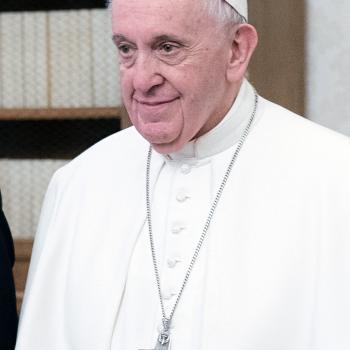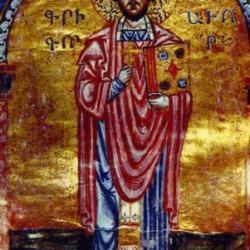“I love to look at the work of God. I love to see the work of God.”
One might look for the work of God in many places. Onnie Lee Logan, “granny” midwife who delivered thousands of babies around Mobile, Alabama, before the state outlawed her profession, saw the work of God in the birth of a new human. Logan tells her story in a well known oral history and describes delivering babies as a calling. She recounts praying before and through the process, credits God for teaching her “motherwit” about what woman or baby would need: “I was doin a great ministry in the sight of God.”
Alabama outlawed midwifery in the late twentieth century (though it restored legal midwifery in 2019). In some southern states the institution persisted far longer than elsewhere in the United States, largely because birth needed attending and no one else was willing to meet these needs long handled by these attendants. Lay midwives, these African-American “grannies” often were trained by their mothers or grandmothers to help women safely through labor. The Sheppard-Towner Maternity and Infancy Protection Act of 1921 provided monies for maternal and child health, directed to reducing infant mortality. Some states used funds to train and license traditional midwives. The licensing system updated practices and brought midwives under supervision from local boards of health, but also kept the institution alive for decades after midwives elsewhere vanished, or were replaced with nurse-midwives. The introduction of Medicaid in 1965, which did not cover the traditional services, encouraged many women who would have sought midwifery to go clinics or hospitals.
Birth touches American religious history at varied points, from the account of colonial midwives like Martha Ballard, in divine-inspiration claims of some alternative practitioners, and in stories like Logan’s and her Alabama contemporary Margaret Charles Smith. Though they mostly served black women, white mothers also sought Logan. “Most white families who engage me nowadays are religious and don’t believe in goin to the hospital. They really goes by the Scripture of the Bible. They want natural childbirth. They said that’s the way God intended for em to have it….They wanna feel the pain cause God say for em that’s what they were gonna do in the Scripture.” Logan’s oral history includes an account of a Seventh Day Adventist couple who declined postpartum stitches out of principle. Recognizing that other plausible interpretations of Genesis 3 do not prioritize God’s assignment of birth agony to women, we find in Logan’s account notice of Christians in the United States, those who choose midwives or home birth explicitly for religious reasons.
The transcendent element of birth appears also in Spiritual Midwifery, the guide written by America’s best known midwife, Ina May Gaskin. In the idiom of 1970s San Francisco, Gaskin urged mothers to be groovy and fathers to be “tantric with your ladies.” She established The Farm in Tennessee, where women come from afar to give “birth as it was meant to be.” Pregnant women and their birth attendants often array oppositionally, proponents of midwifery ruing the regimented interventions of hospital delivery and those reliant on hospital obstetrics insistent that safety favors their methods.
Logan’s testimony stands in striking relationship to a new book about preterm delivery, Early: An Intimate History of Premature Birth and What It Teaches Us about Being Human. In surprising ways, the traditional approach of Logan seems freshly relevant for women who find themselves drawn in to the high-tech emergencies of early birth.
Early starts with the author’s account of her own premature labor. Having a preterm delivery made Sarah DiGregorio curious about the history of the phenomenon in the United States. She discovers that more women and babies are affected than most people realize, that early birth can be dangerous for babies and in many respects remains beyond doctors’ ability to predict or manage. She navigates the NICU and waiting rooms. Expanding out from knowledge provided by her own experience, she notes disparities in premature birth rates and the problems entailed, especially disparities based on race.
DiGregorio’s book presents relevant research, considers vagaries of preemies’ treatment in the past, explains technologies assisting the tiny bodies released to early from the mother’s protection. Through much of it, the reader is left to wonder at DiGregorio’s subtitle: what does prematurity teach us about being human? (I ask this with a stake in the answer, my own work making a similar claim.) The claim might have to do with the extremity these babies present: what distinguishes a 22-week fetus from a 24-week one, and how can two weeks’ difference make one a viable human and the other not? The question might also be answered in the book’s mulling over what these creatures are, some in the book describing the preterm babies as not looking quite human (although all the technologies employed on their behalf and their parents hopes for them presuppose their humanity).
So what does premature birth teach us about being human? DiGregorio returns to this question near the book’s end with testimony from the now-grown men and women who were born early, none of whom would have preferred not to have been helped into life. The author admires the delicacy and beauty of the not-quite-fully-formed child, offering a reply of sorts to her own question: “Premature babies are travelers from another world, beings from the in-between. Caring for them is like touching some essence, something you aren’t supposed to see: he terrible beauty of a human being built, gorgeous and unknowable.”
And in DiGregorio’s own words: “So what can premature birth teach us about being human? There’s no one answer, just more questions.” But the answer to that important question can’t just be more questions.
Seeing an early-born child might highlight the beauty and delicacy of the human form as made untimely visible. Not faulting DiGregorio here but cultural assumptions at large, it’s regrettable that it takes a break in normal gestation to prompt recognition of this beauty. Language of beauty rarely surfaces in popular speech about pregnant women and what they carry, the grotesque or cute named over beautiful or sublime.
Another conclusion seems clear to me from DiGregorio’s book. Regret over the hardship of those forced too early into the world should spark awe for the protective character of human beings, one to another, the ways we by nature and culture help—must help—shield each other from world as it is in order to survive living in it.
Finally, DiGregorio’s gesture at a solution to preterm labor invites pondering humanity in birth. Investigating disproportionate rates of early birth among black women—Mississippi is the worst, she reports—DiGregorio’s evidence tags stresses of racism among chief causes. In stark contrast to the amazing technology featured in the book’s middle chapters and offered in NICU wards to preemies, the solution she suggests for reducing premature-birth rates is decidedly low-tech. Needed for women at risk for preterm labor are care, support, and time. DiGregorio touts the appealing model of Centering Pregnancy, a prenatal approach gathering maternity patients in a group, fostering camaraderie. Addressing some social determinants of health calls for corporal works of mercy.
What incubators and ventilators and surgery accomplish is immense and important. But DiGregorio’s evidence tells us that care during pregnancy can help reduce incidence of preterm birth. Not just prenatal services but actual care, physical presence, listening ear, healthful meals, child care.
I’d suggest this as an answer to DiGregorio’s question. What does childbirth, especially preterm, teach us about being human? That forming a new human body displays beauty, that our very existence requires generosity, that our profound dependency on each other calls forth good things. This is not—at all—to say that a hug and a casserole substitute for respirator and incubator, or that low-intervention care displaces life-saving neonatal treatments.
But the need marked by Early might help us see how urgent is the approach embraced by Onnie Lee Logan. Care for women bearing children is a kind of ministry. This recognition is underscored by some powerful authorities. Both World Health Organization and Pope Francis confirm 2020 as the Year of the Midwife.
In Logan’s words, once again, “I love to look at the work of God. I love to see the work of God. That is the work of God when you see a baby comin through the birth canal…. Ain’t God beautiful. Make me wanna scream on how it all works.”













